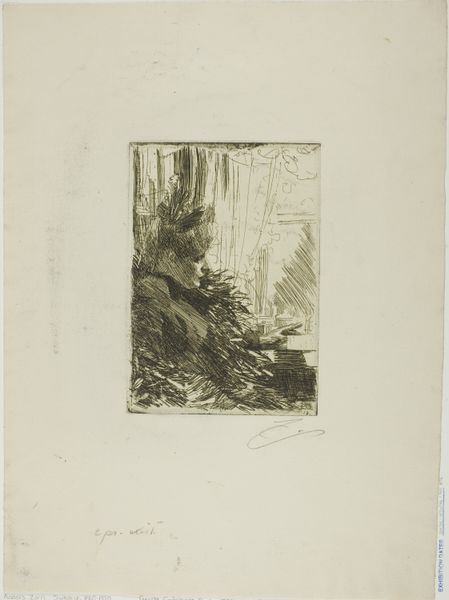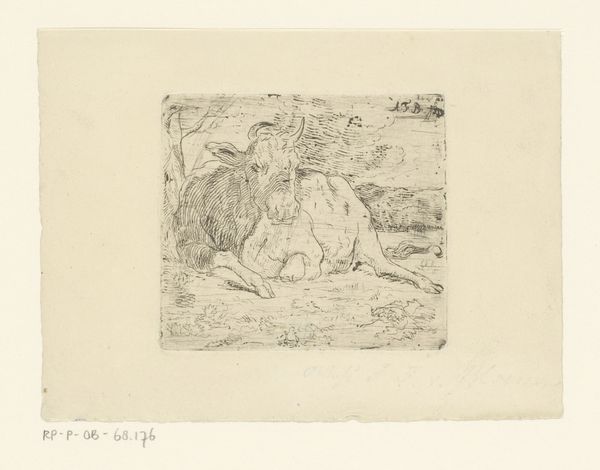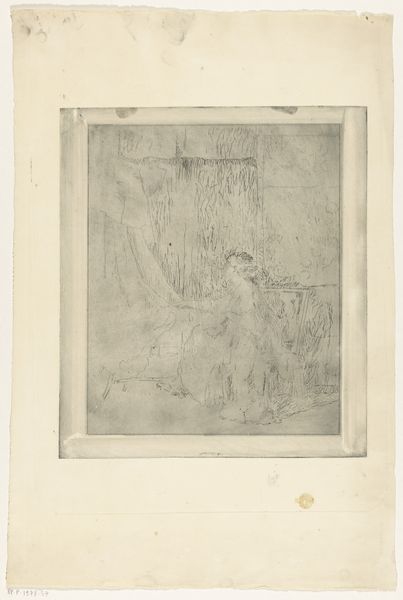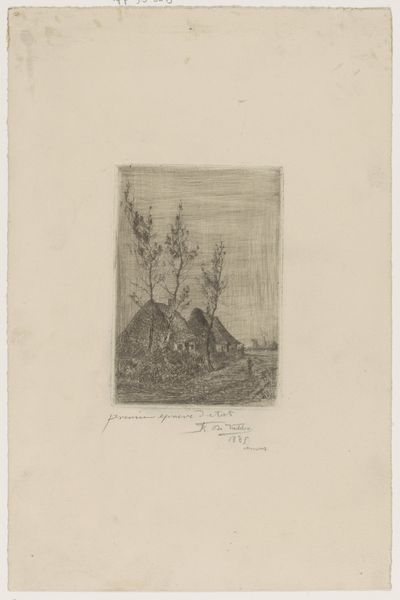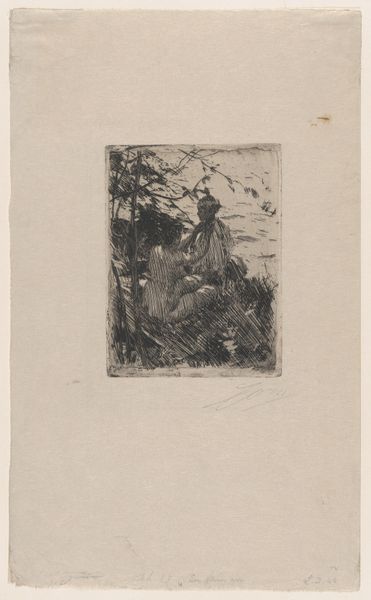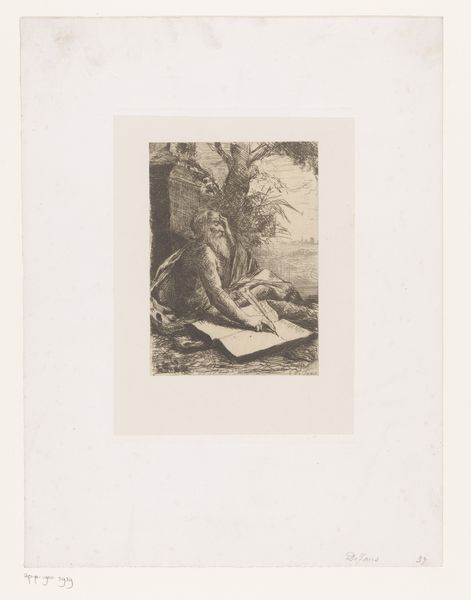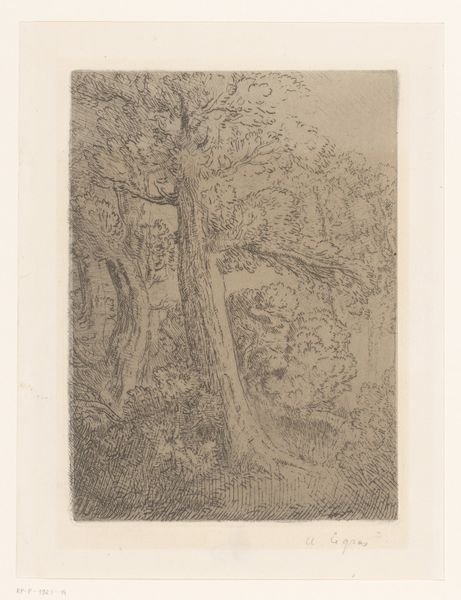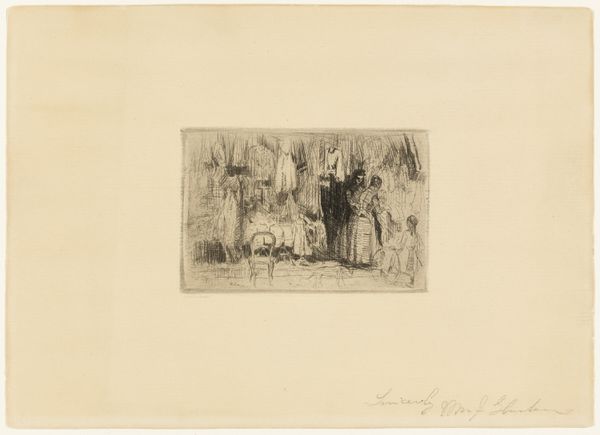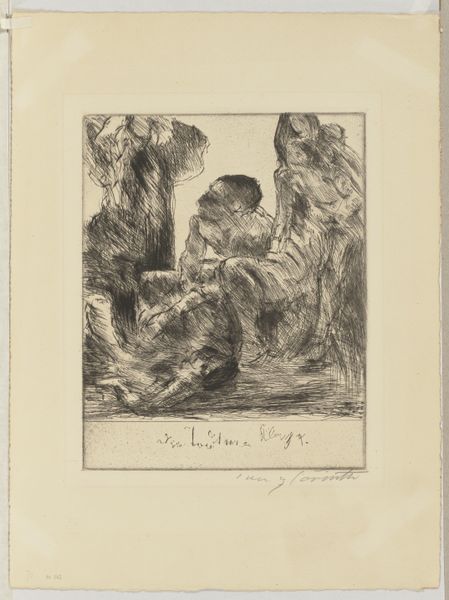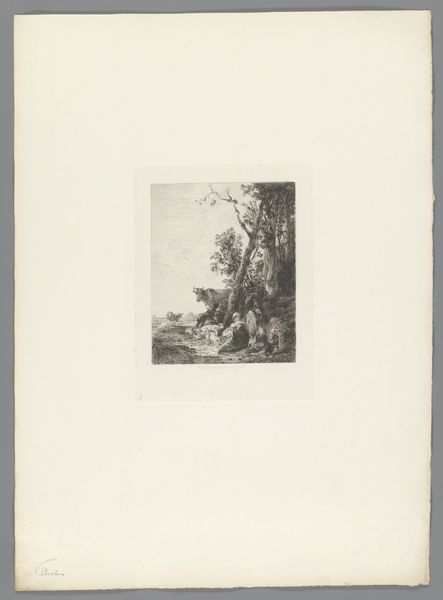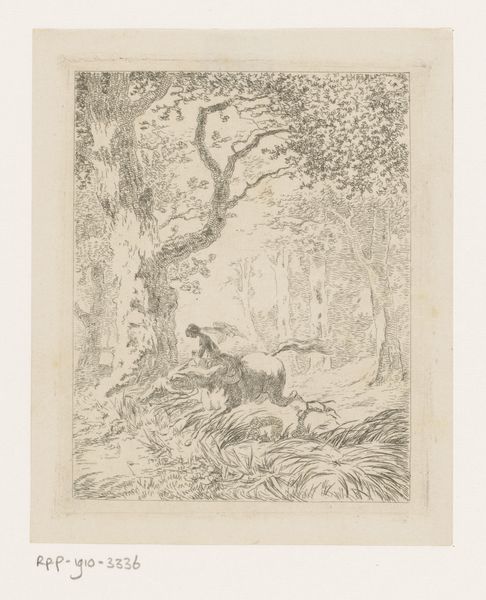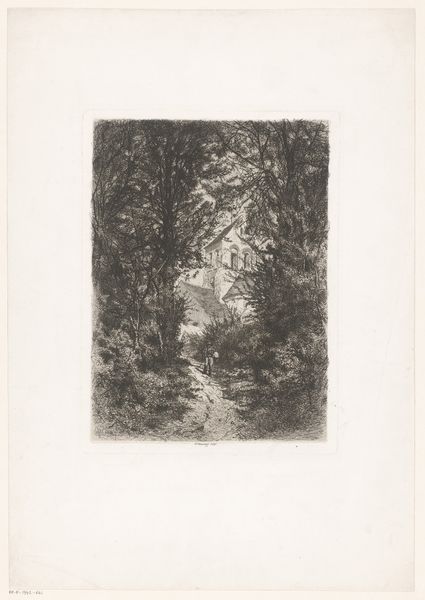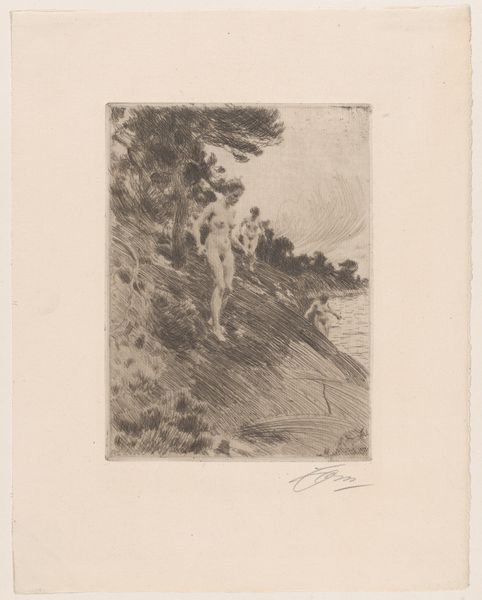
drawing, print, etching, paper
#
drawing
# print
#
impressionism
#
etching
#
landscape
#
paper
#
line
Dimensions: 143 × 110 mm (image/plate); 258 × 207 mm (sheet)
Copyright: Public Domain
Editor: So, this is Camille Pissarro’s "Pathway," an etching from 1882, currently housed here at the Art Institute. The first thing that strikes me is the almost ethereal quality of the scene. The figures are just suggested amidst the dense lines describing the foliage. How would you interpret Pissarro's choices here? Curator: Considering the socio-political context, Pissarro’s return to rural landscapes, like this pathway, highlights a key debate of the period. Following the Franco-Prussian War, there was a push to idealize and even invent a 'true' French identity, often located in the countryside. What do you notice about *who* is using the pathway? Editor: I see two figures; one is closer to us and appears to be walking, maybe even working-class or a peasant, while the other is smaller and further off. Are you suggesting Pissarro is making a statement by including these figures in his landscape? Curator: Precisely. Instead of glorifying grand historical events or depicting idealized pastoral scenes, he focuses on the everyday life and labor within the French countryside. Pissarro presents a public, social landscape accessible to all. Does that alter your initial read of that "ethereal quality" you described? Editor: Yes, it does. It feels less like escapism now and more like a deliberate choice to center the lives of ordinary people in a rapidly changing society. Curator: Absolutely. This aligns with his anarchist leanings. Think about how this subtle landscape speaks to broader questions of class, labor, and identity in post-war France, particularly how these narratives play out in public. Editor: This has really deepened my understanding. I now see "Pathway" as a quiet but powerful statement on social realities of the time. Curator: Indeed. And hopefully it encourages viewers to question the stories told, and *untold,* by artistic representations of the everyday.
Comments
No comments
Be the first to comment and join the conversation on the ultimate creative platform.
